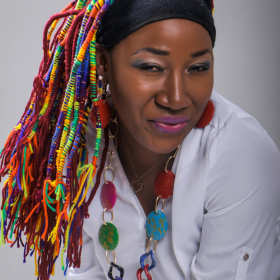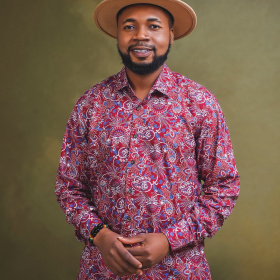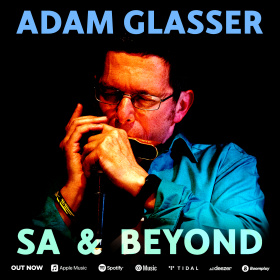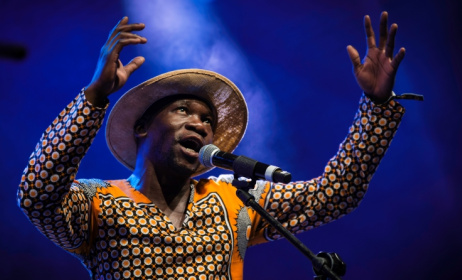CISAC: Africa sees growth in music royalty collections but still behind globally
The International Confederation of Societies of Authors and Composers (CISAC) has released its Global Collections Report for 2022(link is external), which shows that global royalty collections for creators reached an all-time zenith of €12.1bn ($12.8bn), growing by a record 26.7% in what CICAS is calling “a full recovery from the pandemic.”
According to the report, all global regions and repertoires saw growth in 2022, with music collections, the largest segment, increasing a record 28% to €10.8bn – 21.4% up on 2019. CISAC also monitors collections in the audiovisual, visual arts, literature and drama repertoires.
Despite recording 10.4% growth, Africa’s global music contribution remains the lowest, with the region collecting €73m, or a 0.7% global share. This is a 0.1% decline compared to 2021 music collections on the continent.
Latin America registered the highest music growth at 64.9% and posted €550m or 5.1% of the global share, while Europe led the way with €5.54bn (+28.3%), followed by Canada/US (€2.95bn/+29.9%). Europe and Canada/US have a global collection share of 51.1% and 27.3% respectively.
In terms of countries’ music collection ranking, South Africa is in 30th position having collected €40m, or a 0.4% global share. No other African country appears in the top 50. Nigeria, arguably Africa’s biggest music industry, does not have a listed collective management organisation (CMO) under CISAC’s list of members(link is external). South Africa’s data are based on royalty collections by the Southern African Music Rights Organisation (SAMRO), the Composers, Authors and Publishers Association (CAPASSO) and the Dramatic, Artistic and Literary Rights Organisation (DALRO).
Overall, Africa creators’ collections grew by 10.1% in all repertoires, recovering from a pre-pandemic level of €76m as TV and radio remained the largest segment with 43.8% of the total. This was helped by increased income in South Africa from radio advertising revenues and commercial TV.
In 2021, all collections in Africa grew by 17.1% to reach €75m of which €69.7m was from music. Broadcast royalty income grew 11.5% to €33m, two-thirds of which came from South Africa. Zimbabwe registered an eight-fold increase, adding almost €2.5m to the total, while broadcast revenue in Cameroon grew four-fold due to back payments by users.
Live events and use of music by businesses makes up 22.6% of African collections, and grew by more than one-quarter in 2022. The largest contributors to this increase were Angola where revenues jumped five-fold as collections restarted, and Ivory Coast where a 23.2% increase in the live and background sector drove national growth of 2.7%.
Despite this annual growth, the regional total for live and background remains -4.3% below pre-pandemic levels. In South Africa, income grew by 5.5% in 2022 but remained nearly one-fifth down on 2019 with many businesses struggling to recover post-lockdown. While background music collections grew, local society SAMRO reported cinema and live event revenues falling by -94% and -67%, respectively, during the year.
South Africa, Ivory Coast and Morocco are the top three countries leading collections, posting €40m (6.6%), €7m (2.7%) and €6m (-8%), respectively. Visual arts in South Africa registered an impressive 786.1% growth. Compared to other countries, South Africa is the only African country appearing in the top 50 earners in all repertoires at No 31.
The report also looks at collections as a percentage of countries’ GDPs, with Burkina Faso (0.017%), Malawi (0.013%), Zimbabwe (0.011%), South Africa (0.010%) and Ivory Coast (0.010%) coming top in Africa.
Back to the global overview, collections are now 19.8% higher than their pre-pandemic level, driven by continued strong growth in digital income and a recovery in live and public performance.
Digital collections, boosted by continued growth of streaming and subscriptions, rose to €4.2bn. Digital income has doubled since the pre-COVID level of 2019 and is now, for the first time, creators’ biggest income stream, overtaking TV and radio, with 35% of total collections.
Drama was the fastest-growing repertoire in 2022, with royalties increasing by 89.4% after being the worst affected by lockdown restrictions.
Royalties from live and public performance, including concerts, background, exhibitions and theatres, rose 69.9% to €2.7bn. However, the sector fell short of complete recovery, remaining 7.9% below its pre-pandemic level, as local events and smaller venues still struggled to match the recovery of international tours and big festivals.
In a significant rebalancing of income streams since the start of the pandemic, digital collections were up 100%, TV and radio increased 4.6%, and live and public performance were down 7.9% on their pre-COVID levels of 2019.
Every region saw growth in 2022, with Europe remaining the largest at more than half of the global total. Strong growth in North America slightly narrowed the gap to second place, while revenues in Latin America increased by 66.1%, helped by the trebling of live and background income.
“This is a remarkable return to growth as our whole sector fully recovers from the disastrous three-year pandemic,” CISAC director general Gadi Oron said. “While live and public performance have bounced back strongly, the recovery is driven most of all by digital which has now become creators’ largest source of income. Streaming and subscription have not just revived the status quo, they have transformed the market, changed the game for creators and paved the way for future growth.”
CISAC president Björn Ulvaeus raised concern about the potential of AI to seriously disrupt the creative economy. “This year’s results show that the collective management system, despite all the enormous challenges it faces in adapting to digital, is still robust and effective,” he said. “CMOs have the backs of the creators they serve and are now delivering more money to them than ever before. And that is good news – because, fresh from COVID and the economic squeeze, what we now face is another very serious, existential challenge – that of artificial intelligence. AI will radically change the world for creators and the creative industry. It demands international leadership and a strong united front from all parts of the creative industry.”
CISAC brings together 225 CMOs in 116 countries worldwide. These CMOs represent more than 5 million creators, supporting them by negotiating and renegotiating multi-year licence agreements with powerful TV, radio stations and digital service providers. CISAC has 30 members in 27 African countries.
Read the full report here(link is external).




































Comments
Log in or register to post comments